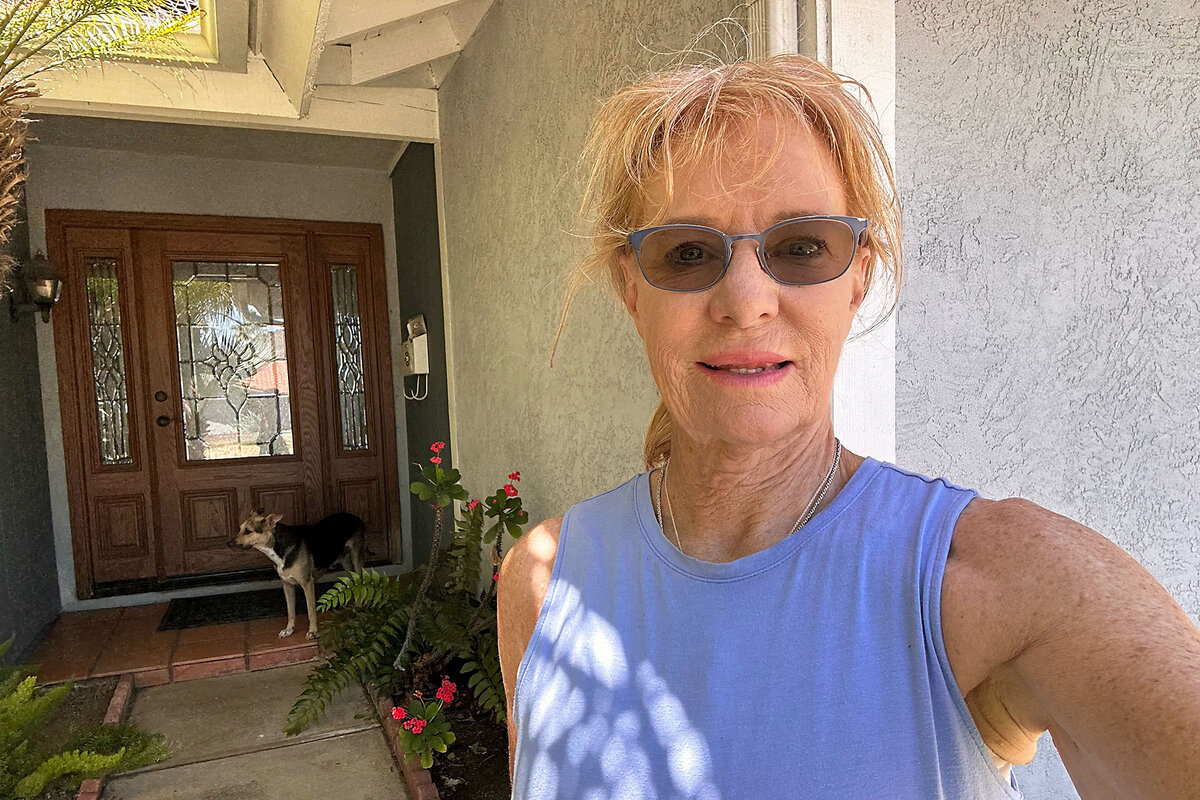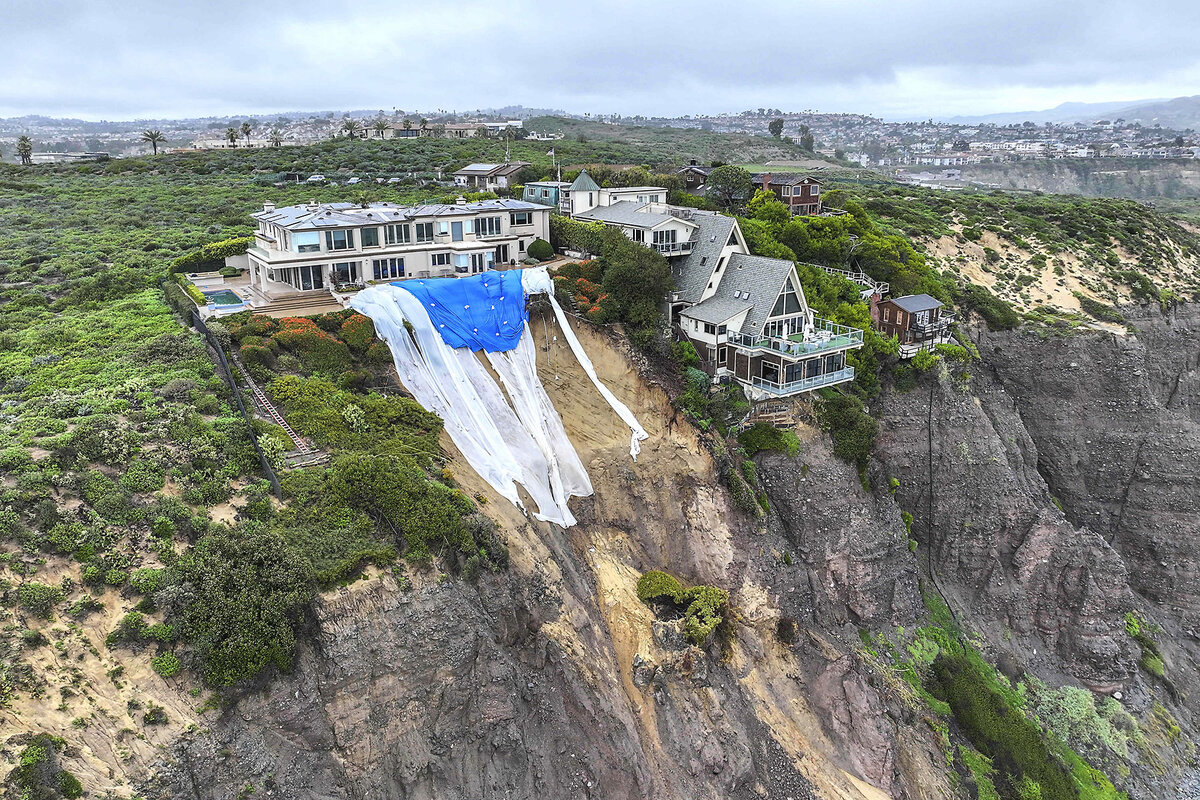Extreme weather and inflation spur perfect storm for home insurance
Loading...
| Los Angeles
Thousands of Californians have evacuated their homes this month, escaping wildfires. Already this year, wildfires have burned over 200,000 acres – more than five times the five-year average for this date. A blistering week is making conditions worse.
The increasing frequency and severity of fires and other climate-related events have brought with them another crisis: homeowners are being dropped by insurance companies – or facing historic rate increases as insurance companies grapple with growing risks from highly exposed markets.
“Insurance companies are not magicians, right?” says Dave Jones, former insurance commissioner for California. “There’s a very real impact associated with climate change, which is landing on their balance sheets.”
Why We Wrote This
A story focused onBuying and owning a home is challenge enough, but trying to find insurance is proving even harder, especially in California and other states hit by extreme weather. What are homeowners’ options and long-term solutions?
Rates are rising nationwide. A new study from the National Bureau of Economic Research (NBER) finds that what Americans pay to insure their homes rose on average by 15% between 2020 and 2023, even after accounting for inflation. The rise isn’t uniform. In areas at low risk of natural disasters, such as hurricanes and wildfires, the premiums have risen along with inflation and the increasing values of homes. In ZIP codes at highest risk – in states such as California, Florida, Louisiana, and Texas – premiums have soared.
The reason: Hit by the fallout of increasingly destructive storms and the possibility that climate change could make future disasters even worse, the insurance industry is reevaluating its risks. The reevaluation suggests that, even with housing inflation slowing to its smallest increase in more than three years, the cost of insuring the riskiest homes will continue to climb.
“Everyone faces that same problem, which is that they need to be able to pay out a lot of claims at once,” says Philip Mulder, a risk and insurance professor at the University of Wisconsin-Madison. “From the insurers’ perspective, this is a logical enough story. But from the homeowners’ perspective … they feel stuck.”
Feeling fortunate
For homeowners caught up in the price surge, it’s personal. Fran Lancaster has lived in her Poway, California, home for over 20 years. In 2023, she noticed a jump in her mortgage payments and discovered that her insurance had tripled.
“I just basically had to eat the extra money,” says Ms. Lancaster. A widow who lives on a fixed income made up of retirement savings and Social Security, she says she called more than a dozen companies, none of which would write her a new policy. Ultimately, she doubled her deductible for a slight discount on the premium and took the financial hit.
“I’m able to do it without feeling like I can’t put gas in my car. So I feel a little bit fortunate in that sense,” she adds.
Karen Lober is having a tougher time. “They used to at least be able to sell you some peace of mind,” she says. “Not anymore.”
The retired Teamster has three roommates and works odd jobs to keep up with bills now. Most of Colfax, the city where she lives, is classified as a very high fire hazard severity zone. Ms. Lober’s insurance company canceled her policy in 2021, forcing her to cobble together coverage: a fire policy from the state’s option of last resort – Fair Access to Insurance Requirements, or FAIR – with a wraparound policy from a traditional insurer. The combination costs her hundreds of dollars more per month.
More than half of states require insurers to participate in a FAIR plan, a policy pool made up of insurance companies that offer coverage in that state. Because the pool is all high-risk, its policies are more expensive than traditional coverage. Homeowners shopping for a FAIR plan have run out of other choices.
“What business did the insurance industry think they were in?” asks Carmen Balber, executive director at Consumer Watchdog, an advocacy group for people buying insurance. Both Ms. Lancaster and Ms. Lober lodged complaints with the organization.
“Do we need to move towards better climate resilience? Definitely,’’ Ms. Balber says. “But the industry jumping ship, precipitously, is a real betrayal of their policyholders.”
In Florida, so many big insurers have left the state that specialty insurers now dominate the market, according to the new NBER study. To guard against a catastrophic storm that would bankrupt them, smaller insurers rely on reinsurance – insurance for insurance companies – to cover nearly 40% of the properties in the state.
Reinsurers face the same inflation pressures as the companies they insure and have “really put the brakes on how much coverage they’re willing to write and the price at which they’re willing to write that coverage,” says Professor Mulder.
Those costs get passed to homeowners.
Insurers’ dismay, Californians’ hope
Last year was the worst for underwriters since 2011, and the industry as a whole has been in the red for half of the last 20 years. In California, historic wildfires in 2017 and 2018 wiped out a decade of insurance industry profits.
As a result, California’s insurance crisis is acute, mainly driven by high payouts following climate-related losses. But a 1988 state policy that has suppressed insurance rates despite the Golden State’s higher home values has exacerbated the problem, as costs have skyrocketed.
“We should have had a system that was reasonable over a longer period of time, but we didn’t,” says Rex Frazier, president of the Personal Insurance Federation of California and a former state deputy insurance commissioner. “Now companies are dealing with that. And so the market and consumers are dealing with that.”
California is dealing with it, too. Insurance Commissioner Ricardo Lara has brought together environmental activists, researchers, and policy and insurance experts – including Mr. Frazier – for a California Climate Insurance Working Group. Their goal is to reduce threats from climate-related disasters, bringing hope to insurers and despondent homeowners.
Big changes and little changes
Insurance companies have long called for changes to California’s rate policy, arguing it prevents them from preparing for catastrophe and from covering their losses from large-scale events, which are now more frequent and severe. They’re advocating for the ability to use forward-looking risk models and to include reinsurance in price-setting. They also want the state to shorten the turnaround time to approve rate increases, which can take years.
“Until it’s a profitable insurance market, insurance companies aren’t going to write more insurance,” says Janet Ruiz, director of strategic communication at the Insurance Information Institute, which provides research to the insurance industry.
Experts say restoring a healthy market will require a combination of policy and behavioral changes. Steps like “home hardening” – using fire retardant materials and clearing brush and debris – and broader efforts to reduce the speed and impact of climate change, like eliminating fossil fuel use, are essential.
“Insurance is the last part of it,” adds Ms. Ruiz.
According to Mr. Jones, who now runs the Climate Risk Initiative at the University of California, Berkeley’s Center for Law, Energy & the Environment, nothing matters more than tackling the risk at its source.
“The lack of availability of insurance is the price that we’re paying for the failure to address climate change. It’s not any more complicated than that,” he says.
“You’ve got to make some money on it, or else you can’t survive. So I understand that,” says Ms. Lancaster in Poway. “I also just know that for ordinary people it’s becoming superhard.”







